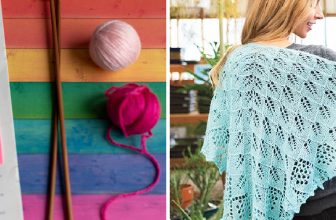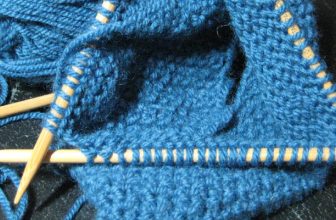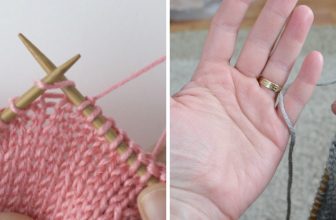How to Block Crochet Cotton
Blocking crochet cotton is an essential step in the finishing process that helps to shape and set your projects. This technique involves wetting or steaming the finished piece to ensure that the stitches lay flat and the overall appearance is polished. Whether you’re working on a delicate doily or a vibrant shawl, proper blocking enhances the drape and definition of your work, bringing out the best in your crochet creation.
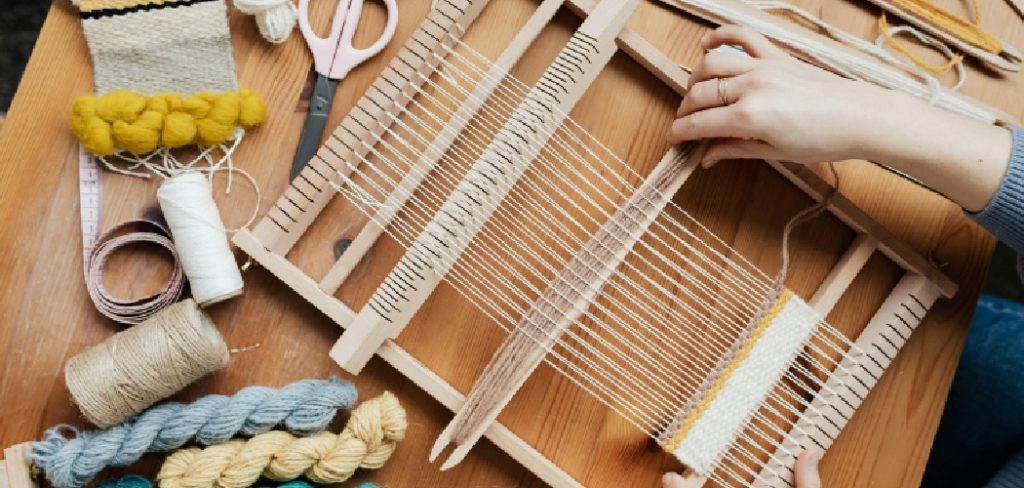
In this guide, we will explore the various methods for how to block crochet cotton, the tools needed, and some tips to achieve optimal results.
What is Blocking?
Blocking is a process used in fiber arts, particularly in crochet and knitting, to transform and refine the fabric of your projects. This technique involves manipulating the piece through wetting, steaming, or pinning to achieve the desired shape and size. By stretching and shaping the fabric, blocking helps to even out the stitches, remove any curling edges, and enhance the overall aesthetic of the creation.
It is particularly important for intricate patterns and lacy designs, as blocking allows these details to be accentuated, resulting in a more professional and finished appearance.
Why Block Crochet Cotton?
Blocking crochet cotton is crucial for several reasons. Firstly, it plays a significant role in achieving the correct dimensions of your project. Many crochet patterns require precise measurements, and blocking ensures that your finished piece adheres to these specifications. Additionally, blocking helps to eliminate any imperfections, such as uneven stitches or curling edges, resulting in a clean and polished look.
It can also enhance the texture of the fabric, allowing intricate patterns to shine and giving your project a more professional appearance. Lastly, blocking can improve the drape of your crochet cotton, making it more suitable for wearables, such as shawls and garments, by allowing them to hang gracefully.
10 Methods How to Block Crochet Cotton
1. Understanding the Importance of Blocking
Before diving into specific blocking techniques, it’s crucial to understand why blocking is essential, especially for crochet cotton. Blocking helps to even out stitches, open up lace patterns, and set the shape of your project. Crochet cotton, known for its crispness and structure, benefits from blocking to enhance its final appearance and to correct any distortion from the crocheting process.

This step ensures that your piece looks polished and professionally finished, making it suitable for display or wear.
2. Choosing the Right Blocking Method
The method you choose for blocking crochet cotton depends on the type of project and the desired outcome. For most projects, wet blocking is effective as it allows the cotton to fully relax and reshape. However, steam blocking can be used for projects that need a more precise and controlled application of heat. Understanding the differences between these methods helps you select the most appropriate technique for your specific project.
Consider the yarn’s characteristics, the complexity of the pattern, and the end use of the item when deciding on the blocking method.
3. Wet Blocking Crochet Cotton
Wet blocking is a popular method for blocking crochet cotton and involves soaking the finished piece in water. Begin by filling a basin or sink with lukewarm water and adding a mild detergent if needed. Gently submerge the crochet cotton project in the water, allowing it to soak for about 20-30 minutes. Avoid agitating the yarn, as this can cause stretching or felting. After soaking, carefully rinse the piece with clean water to remove any detergent.
Gently squeeze out excess water without wringing or twisting, as this can distort the shape. Lay the piece flat on a towel, reshape it to the desired dimensions, and let it dry completely.
4. Steam Blocking Crochet Cotton
Steam blocking is a method that uses steam to relax and set the stitches without fully immersing the project in water. Begin by laying the crochet cotton piece flat on a clean, dry surface, such as an ironing board or a towel. Using a steam iron, hold the iron above the project, allowing the steam to penetrate the fibers without making direct contact. Gently shape and smooth the piece as you steam, paying attention to areas that need more definition or correction.
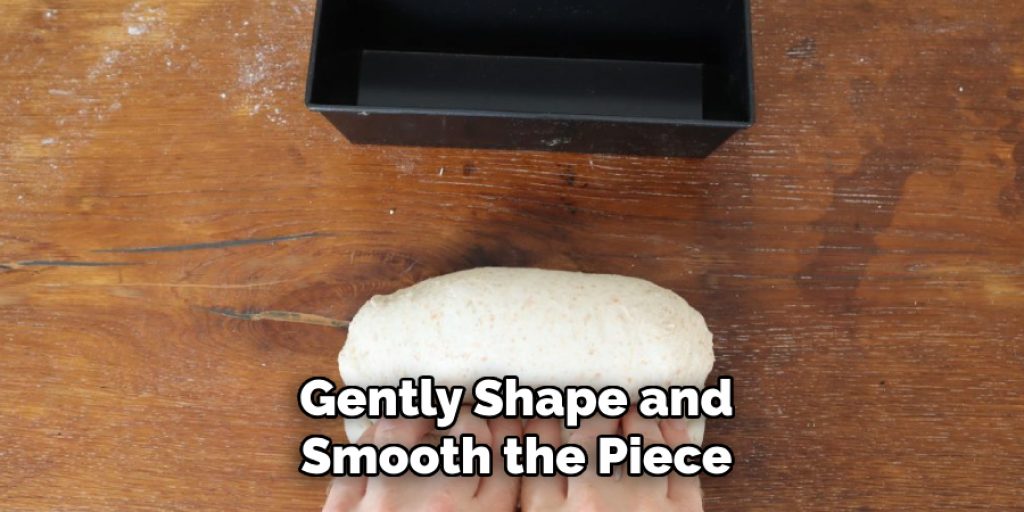
Steam blocking is particularly useful for projects with delicate lacework or intricate patterns, as it provides a controlled and precise way to set the shape.
5. Pin Blocking Crochet Cotton
Pin blocking involves using pins to shape and secure the project as it dries. This method is ideal for intricate lace patterns or projects that require a specific shape. Start by laying the piece flat on a blocking mat or a towel. Using rust-proof pins, carefully pin the edges and key areas of the project to the desired shape. Be gentle to avoid damaging the yarn or distorting the stitches.
Ensure that the piece is evenly pinned and that the shape is symmetrical. Allow the crochet cotton to dry completely while pinned in place, which helps set the shape and definition of the project.
6. Using a Blocking Board
A blocking board is a specialized tool designed to make the blocking process easier and more precise. Blocking boards often come with measurements and grid lines, making it easier to achieve accurate dimensions and shapes. Lay your crochet cotton project on the board and use rust-proof pins to secure it in place. The grid lines on the board help ensure that the piece is evenly shaped and aligned.
For projects that require specific dimensions, such as squares or rectangles, a blocking board provides a convenient and effective way to achieve the desired results.
7. Creating a Custom Blocking Tool
If a blocking board is not available, you can create a custom blocking tool using materials you have at home. For example, you can use foam mats, a clean towel, or even a large piece of cardboard as a substitute. Lay the crochet cotton project flat on the chosen surface and use rust-proof pins to shape and secure it. This DIY approach allows you to customize the blocking area to fit the size and shape of your project, providing flexibility and convenience.

8. Using Blocking Wires
Blocking wires are flexible, thin rods that can be used to create smooth, straight edges and precise shapes. To use blocking wires, thread them through the edges of your crochet cotton project before pinning it to the blocking surface. This method is particularly effective for straight edges, such as those found in shawls or scarves. The wires help maintain the desired shape and prevent the edges from curling or waving.
After positioning the wires, pin the project in place and allow it to dry thoroughly. Blocking wires offer a professional finish and are a valuable tool for achieving clean lines and well-defined shapes.
9. Drying Techniques for Blocking
Proper drying techniques are essential for effective blocking. After shaping and pinning your crochet cotton project, allow it to dry completely before removing the pins. This can take several hours to a day, depending on the size of the project and the humidity levels. Ensure that the drying area is well-ventilated to facilitate even drying. Avoid direct sunlight or high heat, as these can affect the yarn’s texture and shape.
Once the project is fully dry, gently remove the pins and check the final shape. Proper drying ensures that the crochet cotton retains its blocked shape and maintains its quality.
10. Caring for Blocked Crochet Cotton
Once your crochet cotton project is blocked and dry, it’s important to care for it properly to maintain its shape and appearance. Follow the care instructions for the yarn to ensure that it remains in good condition. For most crochet cotton items, hand washing with a mild detergent and laying flat to dry is recommended.
Avoid wringing or twisting the yarn, as this can cause distortion. Store your finished projects in a cool, dry place, away from direct sunlight or excessive moisture. Proper care helps preserve the blocked shape and ensures that your crochet cotton items continue to look their best.
Common Mistakes to Avoid
When blocking crochet cotton, there are several common mistakes that can compromise the final appearance of your project. One of the biggest pitfalls is using water that is too hot, as it can cause the fibres to shrink or distort. Additionally, over-soaking the project can lead to weakening of the fibres, resulting in loss of shape or structure.

Another frequent error is neglecting to reshape the item before drying; failing to do so can lead to uneven or undesirable forms. It’s also important to avoid using regular pins that may rust, as this can stain the yarn. Lastly, be cautious not to rush the drying process; removing pins too early can cause the project to revert to its unblocked state. By being mindful of these mistakes, you can achieve a polished, professional finish for your crochet creations.
Conclusion
Blocking crochet cotton is a critical step in the crafting process, transforming your finished pieces into well-defined and polished projects. By employing these ten methods—understanding the importance of blocking, choosing the right blocking method, wet blocking, steam blocking, pin blocking, using a blocking board, creating a custom blocking tool, using blocking wires, employing proper drying techniques, and caring for blocked items—you can achieve excellent results and enhance the appearance of your crochet projects. Thanks for reading, and we hope this has given you some inspiration on how to block crochet cotton!


